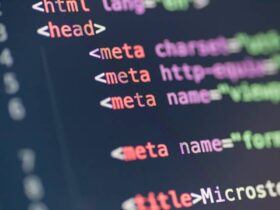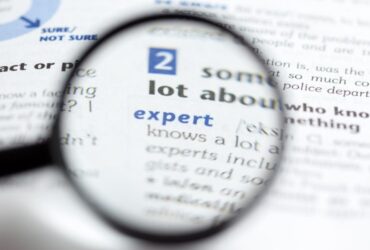In an era dominated by information sharing and digital content creation, the importance of originality has never been greater. Plagiarism detection tools play a crucial role in maintaining academic integrity and the authenticity of written work. As technology advances, the future of these tools is poised for significant transformation. This article explores how AI is shaping plagiarism detection, the challenges faced, and the implications for content creators, educators, and the digital landscape.
Understanding Plagiarism Detection Tools
Plagiarism detection tools are software applications designed to identify instances of copying or improper citation in written content. According to CyberGhost (CG), these tools analyze documents against vast databases of existing texts, looking for similarities that might indicate plagiarism. They have become essential in various settings, including educational institutions, publishing, and professional writing.
Historically, plagiarism detection involved simple string matching—comparing text to existing works without considering context or meaning. However, as awareness of intellectual property rights has grown, so too needs more sophisticated solutions.
The Rise of AI in Plagiarism Detection
Advanced Algorithms and Natural Language Processing
The integration of artificial intelligence (AI) and natural language processing (NLP) into plagiarism detection tools marks a significant advancement in the field. AI algorithms can analyze text not just for exact matches but also for paraphrased and restructured content. This is crucial, as traditional methods may fail to catch cleverly disguised plagiarism.
For instance, AI can recognize synonyms, sentence structure changes, and even thematic similarities, allowing for a more nuanced understanding of whether content is genuinely original. This capability is particularly important in academic environments where the stakes are high, and the consequences of plagiarism can be severe.
Enhanced Accuracy and Efficiency
AI-powered tools are proving to be more accurate than their predecessors. According to a study by MIT Technology Review, these tools can significantly improve detection rates by identifying subtle forms of plagiarism that human reviewers might overlook. They can scan large volumes of text, enabling educators and content creators to verify originality more efficiently.
Moreover, as these tools evolve, they will likely incorporate machine learning, allowing them to learn from past detections and improve their algorithms continuously. This iterative process is essential for staying ahead of evolving plagiarism tactics.
Ethical Considerations in Plagiarism Detection
Fostering Originality and Integrity
While plagiarism detection tools are invaluable, their use raises ethical questions. It’s crucial to view these tools as instruments for promoting originality and academic honesty rather than merely punitive measures. Educators and content creators must foster an environment where authenticity is valued.
Furthermore, as institutions increasingly rely on these tools, there is a risk of creating a culture of distrust. Students and writers might feel that their work is under constant scrutiny, potentially stifling creativity. It’s essential to balance the need for verification with the encouragement of original thought and expression.
Data Privacy and Security
Another critical ethical concern is data privacy. AI-powered plagiarism detection tools often require access to large databases that may include personal or sensitive information. Ensuring the protection of user data is paramount, and developers must implement robust security measures to safeguard against breaches.
Additionally, as these tools analyze content for originality, it’s vital to respect the rights of content creators. The algorithms should not inadvertently flag properly cited work as plagiarized, and transparency in how these tools operate is essential for maintaining trust.
Real-Life Applications of Plagiarism Detection Tools
In Education
Educational institutions are among the primary users of plagiarism detection tools. Universities utilize these solutions to uphold academic integrity, ensuring that students engage in ethical writing practices. Tools like Turnitin and Grammarly are widely adopted to help educators evaluate student submissions effectively.
By leveraging AI, these platforms provide detailed reports that not only highlight potential plagiarism but also offer insights into proper citation practices. This approach encourages students to develop their writing skills and understand the importance of intellectual property.
In Publishing and Content Creation
In the realm of publishing and professional writing, plagiarism detection tools are vital for maintaining credibility. Authors and content creators use these tools to verify the uniqueness of their work before submission, safeguarding their intellectual property.
Major blogging platforms and online publishers often incorporate plagiarism detection as part of their content management systems, ensuring that the material presented to readers is authentic and original. This practice not only protects the rights of the content creator but also enhances the trustworthiness of the publication.
Challenges and Limitations of Current Plagiarism Detection Tools
Identifying Nuanced Forms of Plagiarism
Despite their advancements, AI-powered plagiarism detection tools still face challenges. While they excel at detecting direct copying and basic paraphrasing, they may struggle with more nuanced forms of plagiarism, such as mosaic plagiarism—where snippets from various sources are combined.
Additionally, the complexity of language and context can lead to false positives. An algorithm may flag a well-cited piece as plagiarized if it recognizes similar phrases, potentially penalizing original work unfairly. Ongoing development is necessary to refine these tools and address their limitations.
Adapting to New Writing Styles and Formats
As content creation evolves, so too do the methods employed by writers to bypass detection. New writing styles and formats, especially in digital media, present challenges for plagiarism detection tools. The rise of social media, blogs, and other informal platforms often leads to unique expressions that may not fit traditional definitions of plagiarism.
Developers must ensure that plagiarism detection tools are adaptable, continuously updating their databases and algorithms to keep pace with emerging trends in writing and content sharing.
The Future of Plagiarism Detection Tools
Innovations on the Horizon
As technology advances, the future of plagiarism detection tools looks promising. Innovations such as improved natural language understanding, machine learning, and AI are expected to enhance the accuracy and effectiveness of these tools significantly. Future research may lead to the development of more tailored solutions that cater to the specific needs of different fields and disciplines.
Collaboration Between AI Developers and Educational Institutions
Collaboration between AI developers and educational institutions can lead to the creation of plagiarism detection tools that are better aligned with academic needs. This partnership could foster the development of customized solutions that address specific challenges in different subject areas while promoting a culture of originality.
Conclusion
In an age where content is ubiquitous and originality is paramount, the future of plagiarism detection tools is more critical than ever. By leveraging AI and advanced algorithms, these tools are set to enhance accuracy, foster integrity, and promote ethical writing practices across various sectors. However, as these tools evolve, it is essential to address ethical concerns, ensure data privacy, and adapt to new writing styles.
The journey toward maintaining authenticity in content creation is ongoing. By embracing these advancements and fostering a culture of originality, educators, content creators, and institutions can work together to ensure that authenticity remains at the forefront of digital content creation.













































Leave a Reply